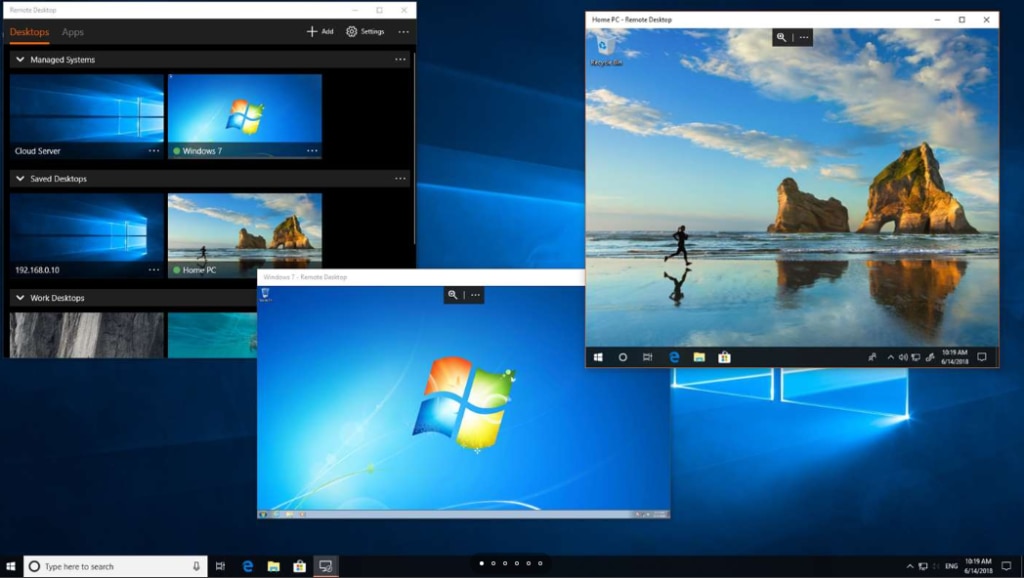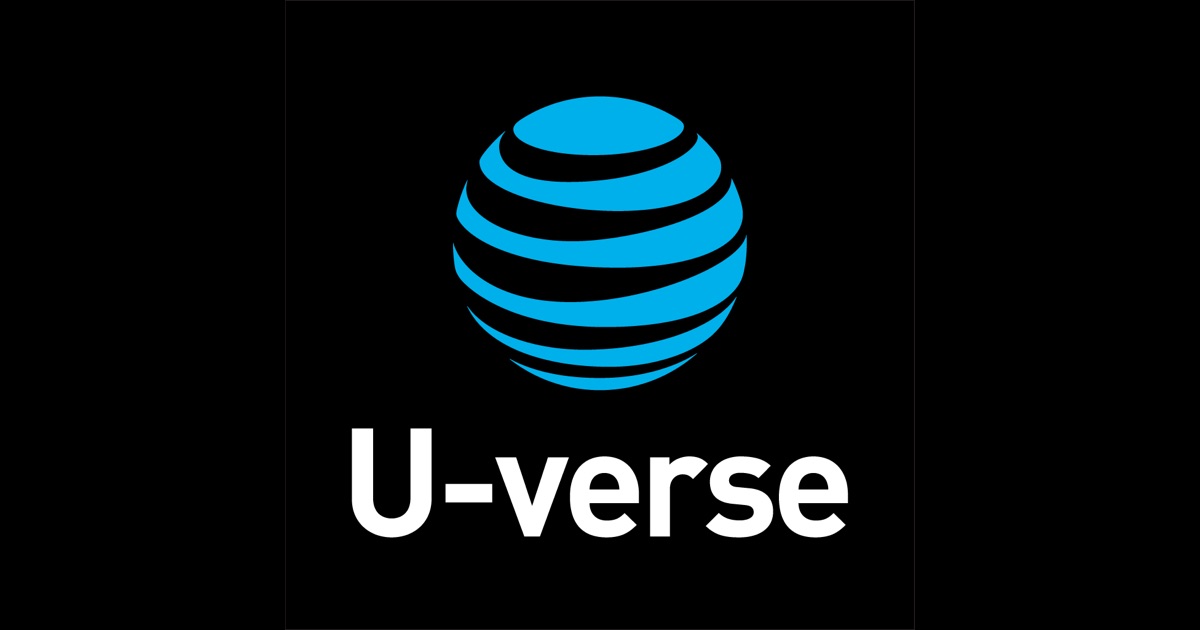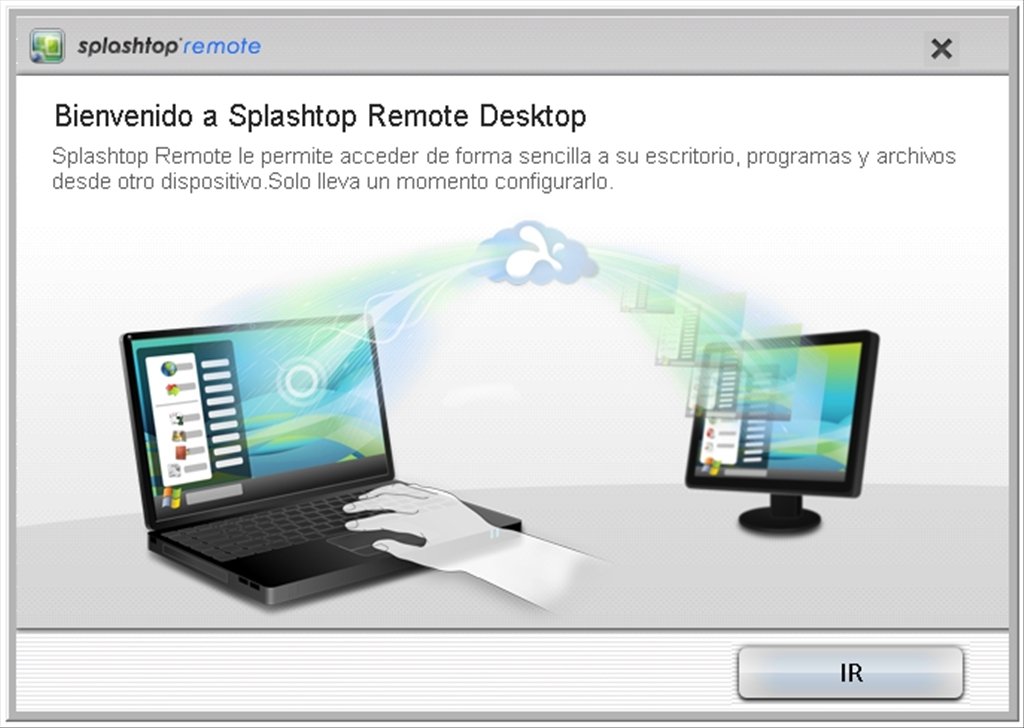- Best Remote Desktop Connection For Mac To Pc
- Remote Desktop For Mac To Pc
- Remote Desktop For Mac Setup
- Remote Desktop 10 Mac
- Remote Desktop Mac To Pc Over Internet
- Remote Desktop For Mac To Pc
- Best Remote Desktop For Mac To Pc
I have a Mac Mini I use occasionally. I use RealVNC to connect to it remotely, from my Windows computer. VNC works well, but it lacks a few useful features. The two main features I'm missing is the ability to match the Mac's resolution to that of my PC screen, and the ability to transfer files between both computers. I'm trying to remote onto a Windows 2012 Server using Remote Desktop Connection for Mac. Using the same credentials, it works from my Windows PC (using Remote Desktop for Windows), but trying to do it from my Mac I get the error: Remote Desktop Connection cannot verify the identity of the computer that you want to connect to. Aug 25, 2019 The remote desktop client works on Linux, Windows, Mac OS, FreeBSD, Android and iOS. One, you can comfortably run a desktop app or even a portable version on a flash drive. You get the usual Banking-standard TLS 1.2 encryption technology, real-time collaboration, built-in file transfer, recording sessions and what not.
Reading Time: 2minutesMac users work in their native Unix environment are familiar with using the terminal to SSH into their Linux-based servers. When using a Mac to log into a Windows environment, or vice versa, the task is performed differently. Window machines use a different protocol, one aptly named RDP (Remote Desktop Protocol). For our tutorial, we’ll explore how to use your Mac to connect to a Windows server. Let’s get started!
Pre-flight

Launched last month, the Chrome Remote Desktop extension lets you connect to and control one computer from another but it can be especially handy for bridging the gap between PC and Mac. In the Finder on your Mac, choose Go Connect to Server, then click Browse. Find the computer’s name in the Shared section of the Finder sidebar, then click it to connect.You may need to click All to see all the shared computers. When you locate the shared computer or server, select it, then click Connect As.
- Mac OS X El Capitan – Version 10.11.16 and above
- Windows VPS Server 2016 and it’s IP address
Step 1: Open Finder >> Applications >> App Store. We’ll be going to the App Store to download Microsoft Remote Desktop.
Step 2. Use the search bar to locate Microsoft’s Remote Desktop. Select Get >> Install App. After installed, click on the Microsoft Remote Desktop icon in your Applications folder.
Step 3: Launch the app by finding it in your Applications folder.
Best Remote Desktop Connection For Mac To Pc
Step 4: For our connection select + New and fill out the information in the highlighted boxes for the Windows server.Connection Name: A nickname to identify this connection
PC Name: Window’s server IP address
User Name: Administrator
It seems counter-intuitive but close the edit window to save the settings. Immediately, you’ll see the server show up in our My Desktops list.
Step 5: Click on the server name to connect to your Windows environment. If all the information was correctly entered you’ll see the Window’s environment with the familiar Windows desktop background.
Would you like to know more about how to connect your Mac to Windows? Open a ticket with us at support@liquidweb.com, give us a call at 800-580-4985 or open a chat with us to speak to one of our Level 3 Windows Support Admins today!
Related Articles:
Remote access to Mac, anywhere

While many countries are on a lockdown due to COVID-19, remote work is becoming a lifestyle. Remotely accessing a Mac is designed to be easy. Apple has spent a lot of time ensuring anyone can log in to their Macs — both desktop and laptop — from any other Mac device, anywhere. And, besides, there are a variety of third-party apps ready to help with that too.
Still, remotely managing their Mac sounds overly complicated to a lot of people. From how you connect to sharing files or screens to using your Apple device as a remote mouse, we want to demystify the process in the easy-to-follow guide below.
Best Remote Access Apps for Mac
There are times when you want to access your Mac remotely, and there are many different solutions to remote access your Mac. Best utilities in one pack, give it a go!
How to access your Mac from another location

There're two ways: you can allow remote login to your Mac from another computer, or allow others to access your computer using Remote Desktop (it's available from the App Store).
Remote Desktop For Mac To Pc
Allow remote login to your Mac from another computer
For devices using the same macOS, you can allow remote Mac login using a Secure Shell (SSH). This enables Mac remote desktop access using a Secure File Transfer Protocol (SFTP).
To set up Remote Login:
- Go to System Preferences > Sharing
- Select Remote Login.
- Choose which users you want to have remote access or the ability to control your Mac.
You can either select All Users, which means any other device on your network, or any Mac you own, can access and connect, or click the plus sign to pick the exact users.
When you want to remotely log in to your Mac from another device, you need to know your username (the name that appears when you login) and your computer's IP address. Write them down and keep them safe, as allowing access to your Mac does make it potentially less secure, especially over cellular or public Wi-Fi networks.
Accessing, controlling, or viewing information on your Mac can be done with a built-in Terminal or any other SSH app using your username and IP address.
Allow others to access your computer using Apple Remote Desktop
With macOS remote Mac access and control is even easier. To set up it:
- Go to Menu > System Preferences > Sharing
- Select Remote Management - it should appear as a checkbox.
- Now you can select who has remote desktop access. Either select, All Users, which means any other device on your network, or Mac you own, can access and connect, or click the Add button(+), which gives you the ability to select who can have remote access and/or control.
If you are using a VPN or VNC viewer and want to access your Mac remotely, you will need to setup a password first. It is also possible to use iOS devices, such as an iPhone and iPad, through Apple Remote Desktop, available from the App Store.
How to stay on the same page with Screens
Collaboration has become of utmost importance to today's workplaces. And with more and more people working remotely, being on the same screen (ahem, page) is a must.
Screens allows you to work remotely with any computer regardless of your location. Whether you are on a business trip or traveling, stay confident knowing you can access any file on your home computer at any time.
This robust screen sharing tool for Mac supports:
- Multiple displays
- Drag-and-drop file sharing
- Hiding your remote screen while accessing it
- Accessing other computers (e.g. colleague's) as a guest
- Alternative shortcuts (useful when connecting Mac to PC)
- Custom actions in case of disconnection
To start using Screens, get the app from Setapp and configure the following:
- Remote login and remote management (as per the guide above)
- Install Screens Connect helper app and create a Screens ID on every machine you'd like to connect to in the future
- Use your Screens ID in the Screens app and it will automatically determine which of your computers are available for connection
Remote desktop client for Mac
Control any computer remotely – a perfect way to access your Mac from anywhere without limitations.
Share files between devices
Today we have plenty of ways to send and share files. But ask someone to send something, and you are likely to get it through email. Due to the ubiquitousness of email, it's still the default method for file sharing, despite its obvious flaws and constraints.
Fortunately, there are much better ways:
Native macOS File Sharing
Few people know that their Mac has native file sharing functionality built in. To use this feature, activate it in the Sharing pane of System Preferences by checking File Sharing. If you only want to share specific folders, add them to the Shared Folders list. If you only want specific users to access the folder, add them to its Users list. Otherwise, everyone will be able to access it.
AirDrop
Although not the most reliable solution, AirDrop works fine for occasional sharing a file between Apple devices. In the Finder, choose Go and then AirDrop on both the sending and receiving Mac. As soon as you see the receiver's user icon, drag the desired file onto it to send.
Read more about how to use AirDrop

Dropshare
If you don't want to send files Mac-to-Mac directly but rather through a cloud storage, there is no easier way than Dropshare. The app works with numerous cloud providers, from Dropbox to Google Drive, and saves your files for sharing by simply dragging them onto its menu bar icon.
File Transfer Protocol (FTP)
The most technical but also the most robust way to share files from your mac is to use FTP, which you could do either through Terminal or an FTP Client, the latter being much more user friendly.
There are a few popular FTP clients one could choose from. The robust file managing app ForkLift covers most of the FTP functionality but takes it to the next level and could be a viable replacement for the Finder altogether with its quick search, instant previews, and file comparison.
DCommander is another full-featured file transfer app for Mac that combines speed and reliability, able to handle thousands of files, schedule backups, and even automate transfers.
At last, when it comes to sharing the same files on different devices, an app like ChronoSync Express becomes invaluable.
ChronoSync Express is powerful tool for sharing and transferring files from Mac to Mac, or any another Apple device. With a feature called Synchronizer Document, you can select which files need to be automatically synchronized and shared between devices, just like that:
Remote Desktop For Mac Setup
- Create a new synchronizer document for each folder synchronization you'd like to perform
- Name the synchronization
- Change the Operation to Synchronize Bidirectional
- Select folders to sync on the left and right
- Test with a Trial Sync
Remote Desktop 10 Mac
Do you need to use a VPN (Virtual Private Network)?
Remote Desktop Mac To Pc Over Internet
Whether you are working on your Mac directly, logging into your Mac remotely, or sharing access with someone else, security should be on top of your mind.
As a rule of thumb, you should always use a VPN when connected to a public Wi-Fi network, as someone could log in and see the information you send just as easily as you do.
And with remote access — even in the View Only mode — someone can see every file and document on your Mac, except those that are password protected. Unfortunately, if you leave passwords in a visible document, you expose yourself to immense risks.
A secure VPN client for Mac like Shimo is well worth using to stop unwanted eyes from lurking around, especially if you are sharing sensitive files, financial records or customer data.
However, for extra peace of mind and security, consider firing up your VPN automatically on all networks you are not 100% sure about to keep your emails, bank accounts and personal documents safe.
To share your Mac with someone else, download a remote Virtual Network Computing (VNC) app like Jump Desktop. With full remote access and Mac remote control, the other person — or yourself connecting to another Mac — can have the same level of control as the person using that device. Except for Admin level access, since it's password protected.
Starting with Jump Desktop is easy: either yourself (gaining access) or the person you are giving a remote view or control access to your Mac, needs to add details of the device and the password.
Secure your access with VPN
Get a VPN client for Mac to avoid privacy infringement while connecting remotely. It's secure and free to try.
Once permission is granted at the other end, remote Mac screen sharing or control (whereby you can use the iOS device as a remote mouse) becomes possible.

How to use your iOS device as a remote mouse
If your remote work starts on a patio hammock somewhere in east Asia, you should note that Apple iOS devices, such as an iPhone or iPad, can be used to control a Mac remotely, much like a mouse can control a desktop or laptop. Apps that make this possible work on VNC.
Remote Mouse is the easiest, most effective way to turn your iOS device into a wireless remote control for your Mac.
Although remote access through a local network would be most effective, since the closer you are to the device the quicker the connection, it's also possible from anywhere in the world, providing the network is secure and fast enough.
Setting up and granting access to the iOS device is the same process as when someone wants to access using a Mac. Except you need to give them a password. And make sure it is different from your primary Mac or iOS (App Store) one.
So working together or checking on your devices can be done from anywhere in the world and there are lots of ways to do that, from sharing screens and files to having complete access to a system set up far away. Setapp equips you with all the apps needed to remotely access any device you need and elevate your work to the global level.
These might also interest you:
Remote Desktop For Mac To Pc
Meantime, prepare for all the awesome things you can do with Setapp.
Best Remote Desktop For Mac To Pc
Read onSign Up

Comments are closed.